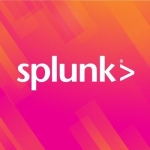What is our primary use case?
Seceon OTM is primarily used as a security operations center (SOC) solution.
Seceon OTM gives a bundle of solutions with a single license, eliminating the need to purchase different tools. For example, you can get source solutions and endpoint protection from the platform. So, you can get multiple solutions from one platform.
On top of that, they are using AI. So it's very good to be a possession of the Seceon OTM in SOC. It's very valuable.
How has it helped my organization?
What is most valuable?
The most valuable feature of this solution is its artificial intelligence. It greatly enhances their technology.
What needs improvement?
There might be room for improvement in the Seceon Open Threat Management platform. For example, the management console could use some enhancements.
The functionality of the product is not affected, but the management console itself could be improved. Overall, that's the only aspect that comes to mind for potential enhancement.
For how long have I used the solution?
I've been using it for four months now. I compared it with other SIM solutions that incorporate artificial intelligence (AI).
Seceon stands out because they have been using AI in its platform since its launch in 2015, which makes them very unique in the market. They offer unique features compared to competitors like LogRhythm, QRadar, and RxI.
What do I think about the stability of the solution?
As far as stability is concerned, based on the feedback I've seen on the internet, the solution appears to be stable. It's still relatively new in the market, but it has received positive feedback, even in terms of the operating system.
Many customers in our company, especially server providers, have expressed satisfaction with it.
What do I think about the scalability of the solution?
It is a scalable solution. It is easy to scale and flexible. Since Seceon system is virtual and can operate in a virtual environment; there are no limitations like those found in hardware appliances. This virtual support enables easy scaling. I would rate the scalability of Seceon a nine out of ten.
How are customer service and support?
Customer service and support are good. They respond quickly.
How would you rate customer service and support?
How was the initial setup?
The initial setup is not much hard. There are deployment phases involved, but it's nothing hard.
What about the implementation team?
The deployment of a SIM solution requires a minimum of two weeks. During this time, the solution starts receiving Syslogs from various network devices such as firewalls, switches, and routers. It takes some time for the system to learn and adapt to this data.
However, if everything is ready from the customer's side, the implementation can be completed within two weeks. The presence of AI helps expedite the process.
What was our ROI?
There is an ROI as a level one SOC analyst, it's 100%. Seceon AI will work effectively without them.
What's my experience with pricing, setup cost, and licensing?
The pricing is very competitive. It's not expensive. It's closer to the low end, so I would rate the pricing around a four out of ten, where one is for low price, and ten is for high price.
Seceon is still establishing itself in the market and is not yet leading the industry, but they are growing rapidly. Therefore, the price is quite competitive.
There are additional costs, but if you opt for those, you'll get around three additional features. When you purchase an additional license, it unlocks four features, providing more options. They are flexible in this regard, so it's not mandatory to pay more. You can simply purchase the standard licenses. So it's up to the customer's requirements. If they require the additional license, we can add it for them. If not, they can stick with the standard licenses.
So just the standard license covers their needs.
What other advice do I have?
I would recommend this solution for those who are not looking to hire a level-one SOC analyst, it's better to go with Seceon AI. Most other solutions require a SOC analytics level one, which operates on a three-level system: SOC analytics one, SOC two, and SOC three. The level depends on the severity of network problems.
For example, SOC one is responsible for detecting and catching any attacks in the network, then analyzing them manually before reporting to the SOC analyst. However, with Seceon AI, you don't need to have that. There's no requirement for a level one SOC analyst. Seceon AI will work for you. It will work for them. So, in this aspect, there's no need to hire additional personnel.
So, Seceon AI will work for you. It will work for them. This means there's no need to hire additional staff, so the AI can do the job.
Overall, I would rate the solution an eight out of ten.
Disclosure: My company has a business relationship with this vendor other than being a customer: reseller
















